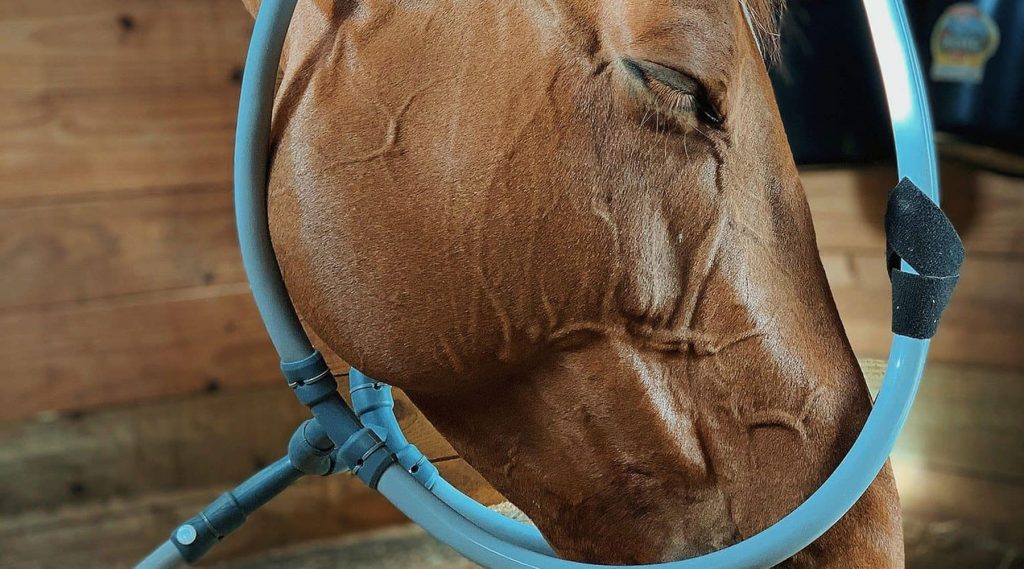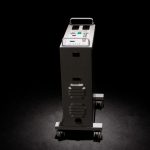PEMF keeps many different types of animals at their best, and so many of them are more than just pets—they’re workers, providers, and athletes! Their bodies are stressed in many different ways. Over the years, supplemental modalities and preventative measures for performance animals have come to the forefront of their care. TMJ (temporomandibular joint) is a potential source of behavioral and physical concerns for many animals.
The TMJ is very active and, like all joints, it is susceptible to inflammation, compensation, and normal “wear and tear.” A number of issues can affect this area, especially since it is irregularly shaped, carries massive amounts of stress, and has many points of attachment for muscles, ligaments, and nerves.
What is TMJ?
At the most basic level, the TMJ is composed of the “Mandible,” or lower jawbone, and the temporal bone. The Temporal bone and the Mandible hinge together, creating a TMJ on either side of the head.
Looking further, the TMJ is a part of the stomatognathic system which connects the hyoid apparatus, shoulders, and all the way back to the pelvic bone. The temporal bone also protects a nerve that is one of the main responders for balance.
Many believe that the TMJ’s only function is to provide motion for the jaw. But in the grand scheme of things, the TMJ is an important part of a complex system that provides overall balance and motion, from nose to tail. And if we look at the body holistically, it is easy to see how negative pressures in the TMJ can negatively affect other parts of the body.
Conditions commonly associated with TMJ
- Subluxation (partial dislocation) or fracture
- Osteoarthritis within the joint itself
- Inflammation
- Infection
- Muscle and soft tissue problems throughout the neck and topline
- Dental deformations/improper mastication (chewing)
Signs to watch for
- Head tossing
- Resisting bridling, not accepting the bit, or becoming “head shy”
- Popping or clicking in the joint
- Uneven wearing of the teeth
- Tilting the head or changing the way the animal carries their head
- Mild to severe performance issues: difficulty turning, picking up a certain lead, refusing to move forward, rearing, bucking, or head pitching
- Decreased appetite or difficulty chewing and eating, including quidding, which is dropping food out of the mouth while chewing
Can I pulse an animal with TMJ issues?
If a veterinarian has diagnosed the animal with a TMJ condition and has approved it to have PEMF sessions, you may do so! Always consult the animal’s primary veterinarian prior to pulsing to be sure they have no contraindications. Studies show that PEMF may improve calcium and collagen production, providing natural support for healthy joint and cartilage function.[9,10]
Always start the session with the first 10 whole-body positions. Then, pulse the pathway to the jaw. If you’re wondering why you should start with a full-body session when the problem is only in one area, check out our blog post “Why Do a Whole Body Session?”
Pulsing positions to try
If the animal is in pain or is experiencing inflammation, they may be sensitive to PEMF. For that reason, increase the magnetic field strength slowly, gauging the animal’s comfort level. Work on the head and TMJ area for 15-20 minutes using any or all of the following positions.
- When you reach the upper neck and head with the loops, tuck the Y-joint behind the ears
- Place the Y-joint with one ear through each loop
- Hang the loops so that the Y-Joint is hanging and the bottoms of the loops are around the ears.
If you are working with an animal that is head shy, smaller loops may be helpful. Smaller loops allow you to approach the animal from underneath their jaw rather than by their ears as well as give you less excess loop to control. They also allow you to concentrate the magnetic field onto a smaller area like the TMJ so that your sessions can be more focused and directed.
As with any issue, our number one priority should be finding and addressing the cause. Modalities such as PEMF will only go so far if the root problem is not remedied. With TMJ issues, look to potential mechanical sources, such as training, saddle fit, dentistry, balance, additional tack, and the fit, feel, and function of bits. Once these factors are ruled out or modified, you and the rest of the animal’s wellness team can start looking at supporting, relaxing, and realigning to bring balance back to the TMJ.
[9,10]To locate the citations referenced here, visit info.pulsepemf.com/research












